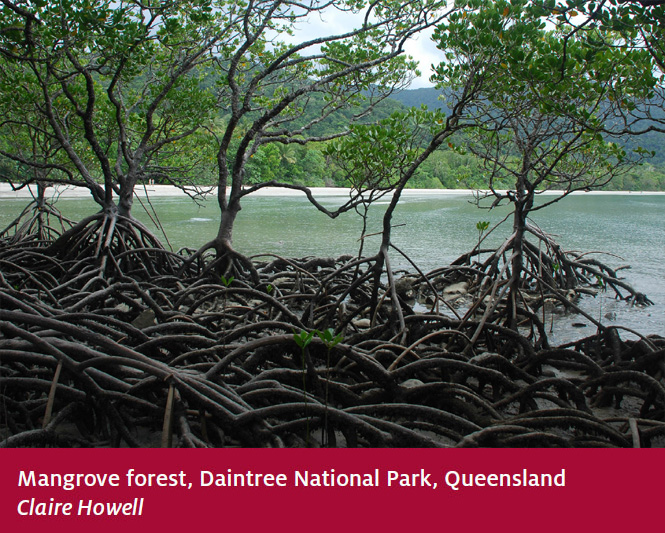This profile has been superseded by the 2019 version, which is available here.
View the complete Australian forest profiles series.
Information for this profile is drawn from Australia's State of the Forests Report 2013.
The Mangrove forest type occurs in many of Australia’s coastal regions, but has a total area of only 0.9 million hectares, or less than 1 per cent of Australia’s forest cover. Australian Mangrove forests contain 41 species of mangrove from 19 plant families. More than half of the world’s mangrove species are found in Australia.
Mangroves are found in the intertidal zones of tropical, subtropical and protected temperate coastal rivers, estuaries and bays, where they grow in fine sediments deposited by rivers and tides.
Mangrove trees have a characteristic growth form, including aerial structural roots and exposed breathing roots. This helps them cope with regular tidal inundation and a lack of oxygen in the soil.
Distribution and ownership
The Mangrove forest type is found in all mainland states and the Northern Territory (Map 1). A total of 0.4 million hectares (48 per cent) are found in Queensland and 0.3 million hectares (37 per cent) are in the Northern Territory.
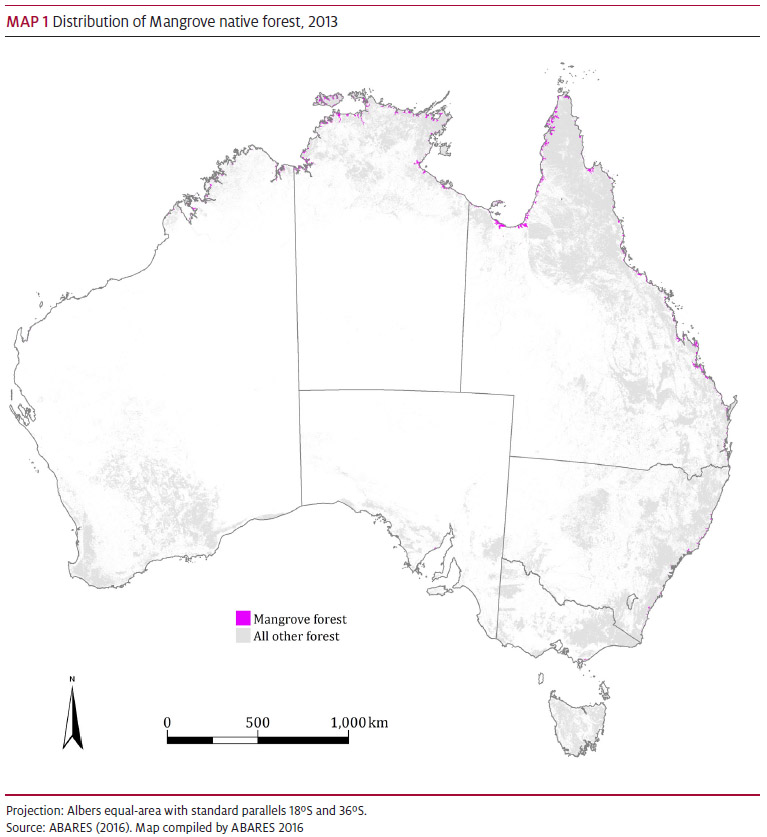
Open a high-resolution version of Map 1 that can be saved as a PNG file
The most common mangrove is white mangrove (Avicennia marina), which is found in mainland coastal areas and comprises three subspecies. Subspecies A. m. marina is found in Western Australia from Bunbury in the south to the Kimberley region in the north. Subspecies A. m. eucalyptifolia is found from Wyndham in northern Western Australia to Mackay in Queensland. Subspecies A. m. australasica is found from south of Rockhampton in central Queensland to Victoria and South Australia.
A total of 0.3 million hectares (34 per cent) of the Mangrove forest type is on private land and 0.2 million hectares (17 per cent) are on other Crown land (Table 1).
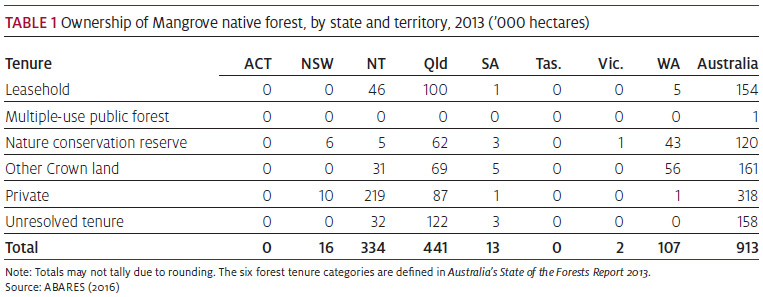
Download Table 1 data as an Excel workbook
Forest Structure
Forty-seven per cent of Mangrove forest (0.4 million hectares) is closed forest and 57 per cent (0.5 million hectares) is low forest (Figure 1).
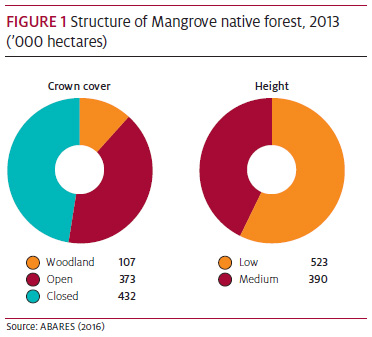
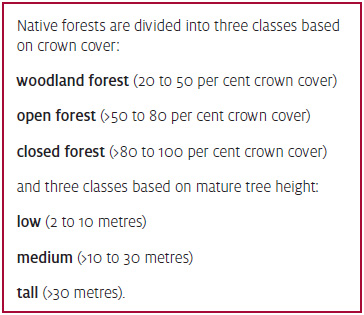
Importance and uses
Mangroves contribute many environmental benefits to coastal and estuarine ecosystems. Mangrove tree and root structures prevent erosion by stabilising soils and sediment in intertidal zones, and provide buffer zones from severe storms and cyclones.
Mangroves also provide habitat and food for migratory birds, estuarine and coastal fish species, molluscs and crustaceans, and serve as nurseries for commercial industries such as prawn farming.
Mangroves have traditionally been used by Indigenous Australians as sources of food, including mangrove fruit, mud crabs, clams and fish such as barramundi. Mangrove timber has traditionally been used to make canoes, paddles and weapons such as shields, spears and boomerangs.
Bibliography
ABARES 2016, Forests of Australia (2013) v2.0, Australian Bureau of Agricultural and Resource Economics and Sciences.
Boland, D, Brooker, M, Chippendale, G, Hall, N, Hyland, B, Johnston, R, Kleinig, D, McDonald, M & Turner, J 2006, Forest trees of Australia, 5th edn, CSIRO Publishing, Melbourne.
Carnahan, JA 1990, Atlas of Australian resources, vol. 6, Vegetation, Australian Government Publishing Service, Canberra.
Mangrove Watch 2013, Welcome to Mangrove Watch, Mangrove Watch Ltd, mangrovewatch.org.au.
Montreal Process Implementation Group for Australia & National Forest Inventory Steering Committee 2013, Australia’s State of the Forests Report 2013, Australian Bureau of Agricultural and Resource Economics and Sciences, Canberra.

